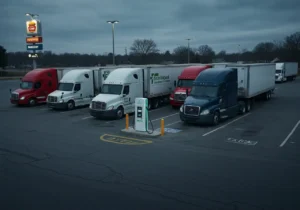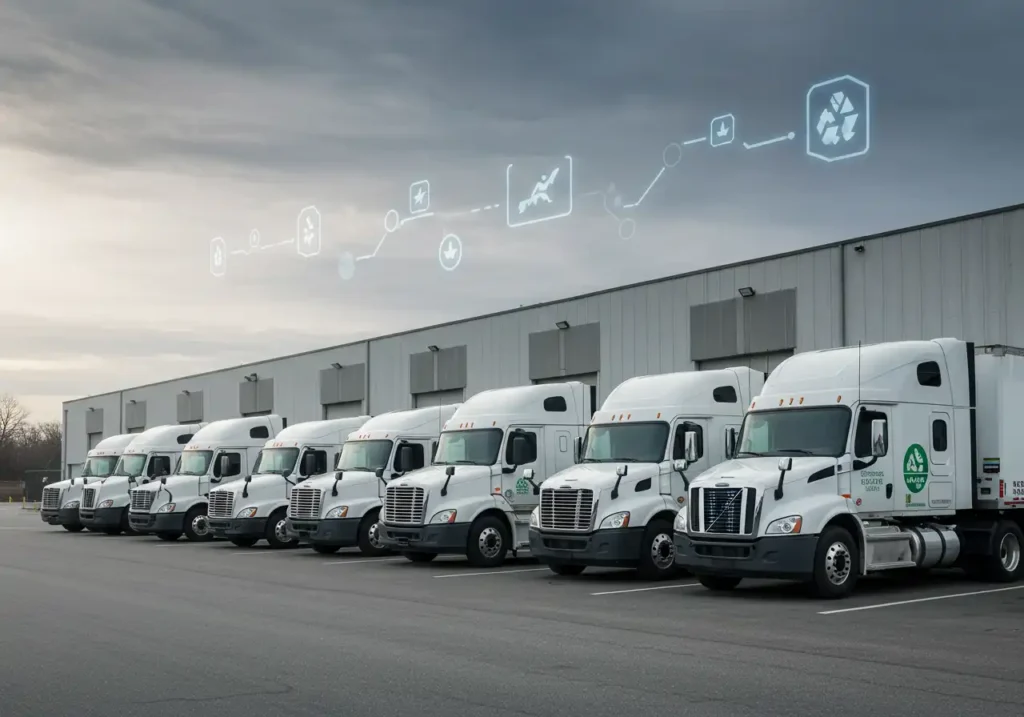For trucking fleets in New England, 2025 is shaping up to be a pivotal year. Massachusetts is moving forward with stricter heavy-duty emissions rules designed to cut pollution, accelerate adoption of cleaner trucks, and bring the state closer to its climate targets. Fleet operators across the region will need to prepare for significant changes in purchasing, compliance, and maintenance practices. Understanding the rules now is critical to avoiding costly setbacks later.
Background: Why Massachusetts Is Tightening Rules
 Massachusetts has long been one of the states leading environmental policy in the U.S. As part of the state’s commitment to carbon neutrality and better air quality, the Department of Environmental Protection (MassDEP) has aligned its standards with California’s Advanced Clean Trucks (ACT) regulation and the Heavy-Duty Omnibus rule. Together, these rules target reductions in nitrogen oxides (NOx), particulate matter (PM), and greenhouse gases from trucks over 14,000 pounds.
Massachusetts has long been one of the states leading environmental policy in the U.S. As part of the state’s commitment to carbon neutrality and better air quality, the Department of Environmental Protection (MassDEP) has aligned its standards with California’s Advanced Clean Trucks (ACT) regulation and the Heavy-Duty Omnibus rule. Together, these rules target reductions in nitrogen oxides (NOx), particulate matter (PM), and greenhouse gases from trucks over 14,000 pounds.
Trucking is a vital part of the Massachusetts economy, but heavy-duty vehicles also represent a disproportionate share of transportation emissions. By tightening emissions limits and requiring zero-emission truck sales over time, the state hopes to cut smog-forming pollution and reduce climate impacts without halting economic activity.
Key Elements of the 2025 Emissions Rules
The 2025 regulatory updates include several important provisions:
- Heavy-Duty Omnibus Rule: Tighter NOx and particulate matter standards for engines in new heavy-duty trucks. Implementation is scheduled for model year 2026, but fleets should prepare now.
- Advanced Clean Trucks (ACT) Sales Mandates: A percentage of new medium- and heavy-duty truck sales must be zero-emission vehicles (ZEVs), ramping up gradually through the 2030s.
- Exemptions: Certain state and local government fleets—such as snow plows and sweepers—are temporarily exempted for 2025 and 2026. Private fleets, however, must comply with standard rules.
- Fleet Turnover Goals: Although existing trucks may remain in service, incentives and enforcement will encourage earlier retirement of high-polluting models.
Who Is Affected?
The new rules will impact a broad range of operators, including:
- Freight and logistics companies: Long-haul and regional fleets will need to invest in compliant vehicles.
- Construction firms: Heavy-duty dump trucks, mixers, and haulers fall under the new requirements.
- Municipal and utility fleets: While some exemptions exist, most service vehicles must eventually comply.
- Dealers and upfitters: Sales, leasing, and modifications must meet emissions and ZEV sales standards.
Steps Fleets Should Take Now
 Preparing early can ease the transition and reduce long-term costs. Consider these steps:
Preparing early can ease the transition and reduce long-term costs. Consider these steps:
- Conduct a fleet audit: Review vehicle age, mileage, engine type, and emissions performance. Identify which units will need replacing first.
- Explore cleaner options: Research available ZEVs, hybrids, and low-NOx diesel engines. Compare performance for your applications.
- Plan procurement timelines: High demand for compliant trucks may create long lead times. Secure orders early to avoid delays.
- Evaluate retrofit opportunities: Some vehicles may qualify for emissions-reducing retrofits instead of replacement.
- Budget for transition: Factor in higher upfront costs but also potential savings from fuel, maintenance, and incentives.
- Apply for grants: Massachusetts and federal programs offer rebates for purchasing ZEVs or retiring older trucks.
Challenges Fleets Will Face
The transition to cleaner trucking isn’t without obstacles:
- Cost pressures: ZEVs and compliant engines are more expensive upfront, even with incentives.
- Infrastructure: Charging stations for electric trucks and fueling options for alternatives like hydrogen remain limited in New England.
- Uncertain technology maturity: Many operators are cautious about adopting first-generation electric or hydrogen trucks until performance and support networks mature.
- Regulatory complexity: Fleets operating across state lines must comply with differing regulations in Massachusetts, Connecticut, Vermont, and beyond.
Benefits of Early Compliance
Despite challenges, early adopters stand to gain several advantages:
- Competitive edge: Shippers and contractors increasingly prefer fleets that can demonstrate sustainability credentials.
- Financial incentives: Early compliance maximizes access to rebates and grants before funding pools run out.
- Resale value: Trucks that meet stricter standards will retain more value in secondary markets.
- Operational savings: Cleaner technologies often deliver reduced fuel and maintenance costs over time.
Long-Term Outlook for New England Fleets
Massachusetts is unlikely to remain alone. Other New England states, including Connecticut and Vermont, are considering or adopting similar measures. Fleets that prepare now will be better positioned for multi-state compliance and may even discover new business opportunities by marketing themselves as clean, sustainable operators.
Looking ahead, the combination of regulatory pressure, financial incentives, and customer demand is expected to accelerate the shift toward zero-emission heavy-duty trucks. While diesel will remain on the roads for years, the industry’s direction is clear.
Conclusion
The Massachusetts heavy-duty emissions rules of 2025 mark a turning point for New England trucking. While compliance will require investment and planning, fleets that act early will avoid disruption, benefit from incentives, and position themselves as leaders in a cleaner, more sustainable industry. For truckers and fleet managers, the time to prepare is now.
Looking for more on trucking regulations? Don’t miss our guide on Trucking Regulations in 2025 and our practical list of Fleet Management Tips for Northeast Operators.

